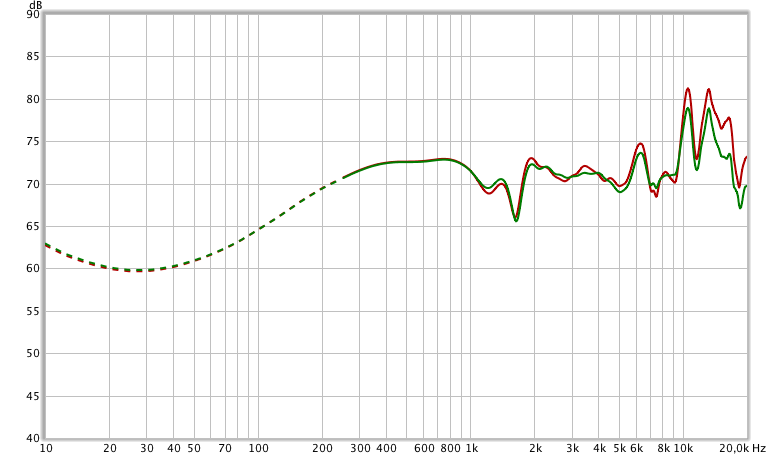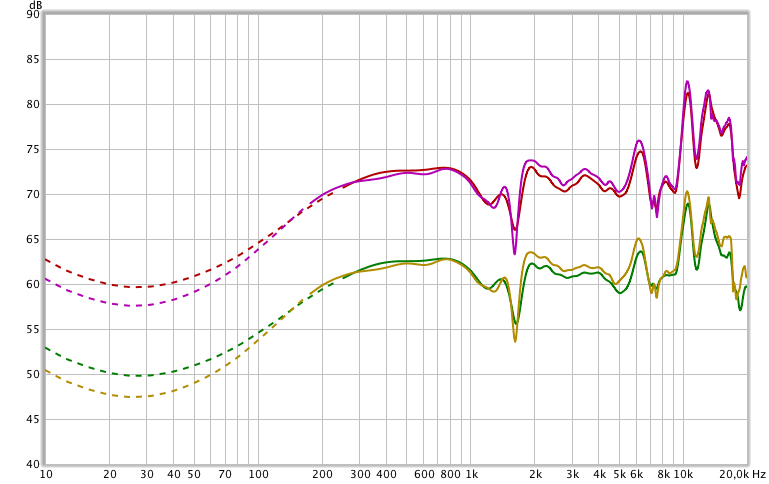I'd say we listen with our brains, actually...I'll opine that...we don't actually listen with our "ears", but rather our soul
I'd say we listen with our brains, actually
I agree, any motion of the tympanic membrane has to pass the auditory system.
Point missed I think
Yes, but it was you who missed the point. Music speaks to our heart and soul but sound reproduction is an engineering task. Once the music has passed mastering the creative work is done. Don't know why audiophiles have such a hard time accepting this simple fact.
It seems that sarcasm is not translating well
Bob
It usually doesn't in written language. At the same time it's not a way of communication one can be particularly proud of.
Don't know why audiophiles have such a hard time accepting this simple fact.
The point is that our current measuring capabilities are just scratching the surface,and there is much more we have no way of measuring, and even less information on how what we do measure correlates to what the ear/brain perceives.
Keep in mind the elephant & the blind observers.
dave
This presumes that your room is dead flat,
Why would that be?
and that you actually like the mastering.
Bob
If you don't like the recording then why listen to it or even buy it? Once a painting is painted then why paint over it? Would you really paint over a Picasso just because you don't like certain aspects of the painting? That would be quite arrogant. Besides that, is it even possible to apply "fixes" once the paint as dried?
The point is that our current measuring capabilities are just scratching the surface,and there is much more we have no way of measuring, and even less information on how what we do measure correlates to what the ear/brain perceives.
Keep in mind the elephant & the blind observers.
dave
If a driver shows linear distortion like the Alpair does one doesn't have to start a discussion about epistemology. EQ would do. When do you guys finally try it and find out for yourself? Painting dots on a diaphragm is certainly less time consuming and probably a lot easier to sell IF people just believe in it...
I buy a recording for the performance. Then I hope that some dumb-a** "recording engineer" hasn't messed up the sound to a point that I cannot correct it for reproduction in my listening room.If you don't like the recording then why listen to it or even buy it?
+2 to dewardh - for me it's still the performance, which is why for example some of the 70-80yr old recordings on Ken Wiley's Art of Jazz are still enervating, dare I even use the word arousing(?), while the sound quality on some is execrable.
of course in those days the extent of the engineer's intervention during recording or reinvention on mastering, etc was far more limited than today
of course in those days the extent of the engineer's intervention during recording or reinvention on mastering, etc was far more limited than today
When do you guys finally try it and find out for yourself?
We so a lot of that. Lots of drivers don't make the cut.
dave
When do you? Did you really find it necessary? Or even an "improvement"?EQ would do. When do you guys finally try it and find out for yourself?
FWIW I do knock down the high end (above 10kHz) a bit . . . but I do that with almost all speakers because it just, um, sounds better that way in my listening room.
What's surprising about the 7.3 is that the charts look bad (especially between 1-2kHz) but it doesn't sound bad. In fact it sounds very good . . . better than some "brand name" midrange drivers with much better looking curves. I'm reminded of the Magneplanar response curves, which also look pretty ragged in that range but they don't sound ragged at all.
There remains a significant and unexplained divergence between what we measure and what we hear . . .
My favorite 3 inch is the Peerless TG9 or the Vifa TC9 (both brands were bought out by Tympany, which also owns ScanSpeak and maybe some other sompanies now). They're cheap ($22 / $12) and have all the right features. Xmax is good but not the best in its class, but that's a tradeoff with dispersion and cavity effect, when the cone suspension sticks out too far (like with the Daytons) the cavity effect shows up on the frequency response graph. They are some of the flattest drivers out there. Superb from 300HZ to 8kHZ, but not bad from 125HZ to 16kHZ. Metal diaphram drivers all have a big resonance somewhere which limits usable frequency response and requires a more complex crossover. They've got rubber suspension (foam disintegrates over time), well vented spider, vented pole piece, shorted turn on end of pole piece (for less distortion at high frequencies), and minimal frame edge so it can be as close to the tweeter as possible so acoustic interference isn't as bad. Roger Russel of McIntosh uses the TG9's in his $19,000 line array system, running them from 20HZ - 16kHZ (using active EQ). I'm using the TG9s in my holographic soundbar, and the TC9's in my computer system. Being able to keep crossover points out of the 1kHZ - 7kHZ range (where the ear is most sensitive and where we detect stereo image location primarily by amplitude comparison) helps stereo imaging significantly.
Their only shortfall, which appears to apply to all drivers in this class (small drivers with good Xmax), is effiency. It's about 85dB 1 watt/1meter. Most hi-fi drivers are 88dB - 92dB area. You could have to attenuate the woofer if the crossover is passive. Or you could design a passive EQ that only attenuated the upper frequencies of the woofer, which you'd probably want to do anyway. An 8 ohm resistor across a large inductor, in series with the woofer could provide roughly a 6dB rolloff from 200HZ to 800HZ, for example.
Their only shortfall, which appears to apply to all drivers in this class (small drivers with good Xmax), is effiency. It's about 85dB 1 watt/1meter. Most hi-fi drivers are 88dB - 92dB area. You could have to attenuate the woofer if the crossover is passive. Or you could design a passive EQ that only attenuated the upper frequencies of the woofer, which you'd probably want to do anyway. An 8 ohm resistor across a large inductor, in series with the woofer could provide roughly a 6dB rolloff from 200HZ to 800HZ, for example.
Peerless, Vifa (both brands were bought out by Tympany, which also owns ScanSpeak)
Scan-Speak management bought back Scan-Speak
They've got ... vented pole piece...
Not an asset IMO. The cavity resonance of the vent is a PITA They can be blocked off thou.
Their only shortfall, which appears to apply to all drivers in this class (small drivers with good Xmax), is effiency.
There is an Sd term in the efficiency equation so the smaler the driver, the less potential efficiency.
dave
When do you? Did you really find it necessary? Or even an "improvement"?
I already did, yes and yes.
It seems that sarcasm is not translating well
Bob
Could I be of assistance at this point?

Here's my other Alpair 7.3 (0° and 10°) - looks basically the same:

Here's both drivers 0° (top) and 10° (bottom) - excellent tracking:

Looks a lot like what one would expect from a drive unit whose maker bleats fanatically about that nonsense idiocy "break in."
Here, if anything's "breaking in" here, it's not the drivers....
- Status
- Not open for further replies.
- Home
- Loudspeakers
- Full Range
- 3"or 4" driver with very good dispersion and high xmax?